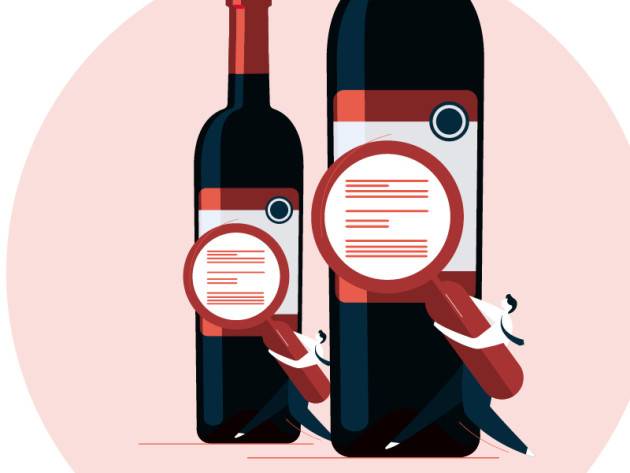
Soapbox: Why ingredient labelling on alcohol is vital
Richard Horwell of Brand Relations says full and compulsory ingredient labelling on alcoholic drinks is essential for the longevity and transparency of the sector
With the aim of encouraging wine and spirit producers to display more information, including ingredients, calories and sustainability initiatives on product labels, a new voluntary e-label scheme developed by CEEV and Spirits Europe – called U-Label and accessed via QR code – launched on 1 December.
In 2021, this kind of nutritional information is absolutely necessary for the industry. We need complete transparency in the alcoholic beverage category, as we have in other sections of the industry. So although the scheme is well-intentioned, and widely accessible across the EU with over 20 languages available – including English – I am not convinced it will work on a voluntary basis.
The problem for wine specifically is that it has many hidden ingredients. Consumers picking up drinks from the supermarket will be well aware of the abv and how many units of alcohol each bottle or can contains. However, often what are perceived the ‘healthy’ ingredients, such as fruit, are far lower than expected, and the ‘unhealthy’ ones, such as sugar, significantly higher.
The Sugar Tax was introduced to help tackle obesity. So, it seems illogical that the tax and associated labelling doesn’t apply to alcoholic beverages.
The fear for many brands around disclosing their ingredients, including sugar and calorie count, is that compulsory labelling could erode consumer trust and lead to a dramatic reduction in sales; and in order to prepare for fully disclosing ingredients, many brands could find themselves having to reformulate their product. It is a complex and expensive endeavour. Unless everyone is displaying the information, no one will do it.
↓
Fear of disclosure
Brands may argue that there simply isn’t enough room to display all the ingredients and nutritional information on a small bottle or can. I respectfully disagree. When I launched an alcoholic sparkling wine several years ago called Ibiza Ice, I decided to put all the ingredients and nutritional information on the product with no problems.
There is certainly room for basic information, and QR codes and websites can give consumers more detail. At a minimum, the ingredients should be on the can or bottle; and available without the need to own a smartphone, download a scanner or spend time accessing information remotely.
If the government is truly concerned about the obesity crisis, sugar consumption, rising rates of diabetes and the nation’s health, then it needs to take action to bring alcoholic drinks in line with other food and drink brands, by making nutritional labelling compulsory in the UK.
I strongly believe all new brands and start-ups that are launching an alcoholic beverage need to have transparent labelling, regardless of whether they are part of a voluntary scheme or not. This, in turn, will mean they have to be mindful of their formulations and ensure their drinks are not just flavoured sugar water with alcohol added.
At Brand Relations, we have just been involved in the launch of a rum punch called Punch M, where all the ingredients, sugar content and calories are listed on the packaging.
I will not work on a brand unless it has transparent labelling. If responsible labelling does – as it should – become compulsory, many brands will find it necessary to overhaul their recipes to avoid being shamed by what they have been tricking customers into consuming.
Brands should future-proof themselves now by being transparent about the ingredients that go into their drinks.
Eventually we will see full labelling on alcoholic drinks. New legislation requiring large businesses in the out-of-home sector, such as restaurant chains, to display calorie information of non-pre-packed food and drink items is going live in April. This is already compulsory for all drinks products in the pre-packaged retail sector. Why not go further and make it compulsory for non-pre-packaged drinks, too?
Consumers can spend their whole week watching what they eat and drink, and then completely destroy the good they have done on a Friday night out. If they were better informed about the nasties and the calories in their drinks, they could make more informed decisions.
Much as I am pleased to see the introduction of an accessible voluntary labelling scheme for the alcoholic beverages sector, I do not believe it will be effective. Compulsory labelling, plus a sugar tax are needed to deliver the information consumers need and support better health outcomes.
Keywords:
- alcohol
- brand
- says
- labelling
- relations
- richard
- Soapbox
- vital
- ingredient
- horwell
- ingredient labelling
- vital richard
- richard horwell
- brand relations
- relations says
- vital richard horwell
- brand relations says




